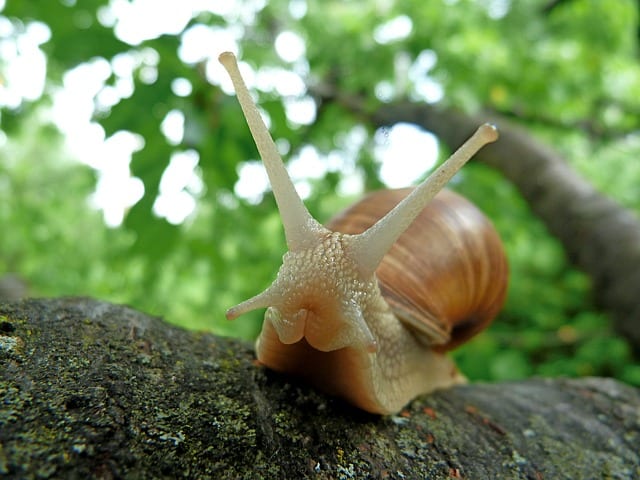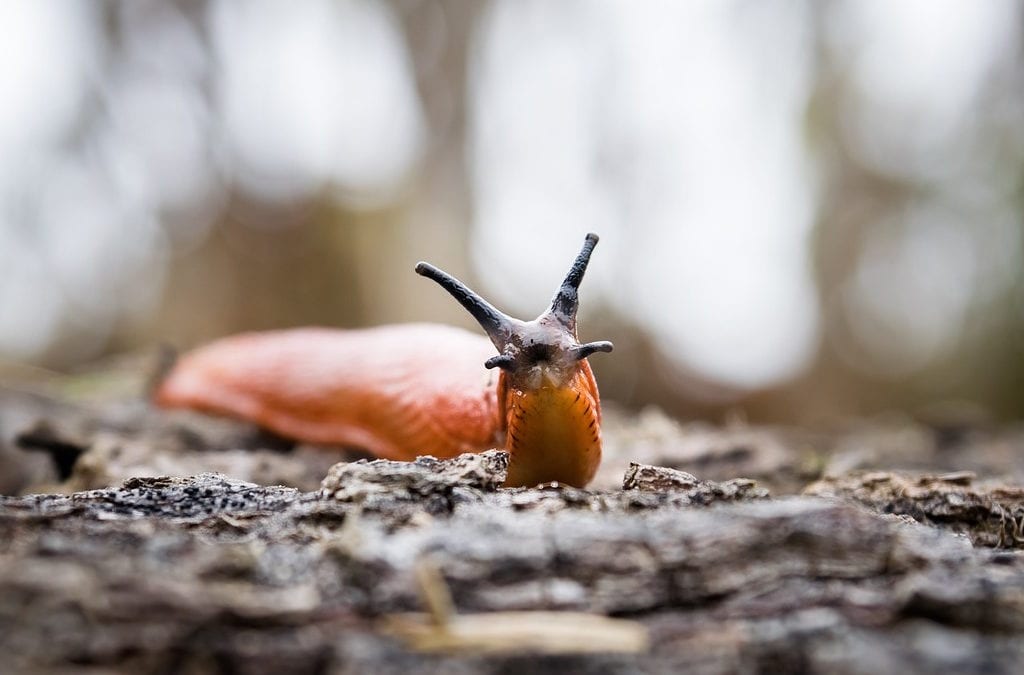We are taking on a few of the most common “chewing” pests in today’s blog. These pests can strip the foliage, create unsightly holes or tear and shred the leaves of your plants. With consistent observation many of these “chewers” can be removed manually, lessening the need of toxic products, or they can be prevented by a good clean up in the garden; but for those that stick around, check out our suggestions for solutions below.


Cutworms can quickly skeletonize the leaves of your edibles and take the plant down to nubs.


These are the good guys! Make sure you can distinguish between pests and the good guys!
Caterpillars/Cutworms/Hornworms are chewing pests that can leave you with a garden of stumpy stems or no plants at all! However, remembering what some of these caterpillars eventually turn in to (bee-yoo-tee-ful butterflies) can help to choose methods of control very carefully. Check out this link for identification of caterpillars. Be discerning and figure out which caterpillars are pests, and which will turn into well-loved, helpful pollinators.
- Signs you have Caterpillars/Cutworms/Hornworms: Leaves have a torn, chewed on appearance, look skeletal, or could be stripped completely of foliage. Check under the leaves; if you don’t, you may miss them!
- Treating for “pest” Caterpillars/Cutworms/Hornworms: If they are chomping away at edibles you might displace “butterfly” caterpillars to plants you’ve provided specifically for pollinators (milkweed, etc…). If they are “pest” caterpillars, or cutworms, pluck them off and dunk them in some soapy water, or spray plants with a product like Bt (Bacillus Thuringenisis).


Leaf miner damage on a basil plant.


No mistaking the “road map” pattern the leafminer makes!
Leaf miners are the larvae of moths, beetles, and flies. These pests lay their larvae on leaves of plants. The larvae then burrows inside the leaves of the plant and eats its way through it, forming a twisty trail. The damage from leaf miner pests is mostly aesthetic, but plants can become a bit weakened.
- Signs you have leaf miners: Leaves have the tell-tale look like something has carved a twisting, winding path through them.
- Treatment for leaf miners: You can remove the affected leaves, which in turn removes the larvae before it turns into an adult and produces it’s own larvae, thus breaking the cycle. If you have a plant you know is susceptible to leaf miner pests , you can preventively treat with Neem oil in spring before the insects have a chance to lay their eggs. After the fact, leaf miners can be controlled by spinosad. The leaf miner must ingest spinosad, so you may need to repeat applications (follow label).


A face only a mother could love. These love to play hide and seek, so look for them and look for them often.


Holes like the ones found in these cast Iron plants are a sign of slugs and snails. Time to clean the garden!
Slugs and Snails are pests that chomp and chew their way through your precious plants, especially after periods of heavy or consistent rainfall.
- Signs you have slugs or snails: Large holes will appear in the leaves of your plants. You may find a trail of slime on the leaves and rocks around the base of the plant. Little pearly white eggs might be laid there as well. (Eggs are laid in the early weeks of summer and they only take 3-4 weeks to hatch)
- Treatment for slugs and snails: Preventatively, you can remove as much debris as you can away from your plants (that’s where they like to hide). Natural methods such as beer traps, or placing sharp, crushed up objects around the base of the plant you are trying to protect can deter these garden pests. Diatomaceous Earth sprinkled around the base of the plant can have the same effect, but will need to be reapplied after watering or rainfall. Commercial products like Sluggo Plus work well for slugs, snails, pillbug, and other pests that creep along the soil surface. Always read labels to make sure products are safe to use on or around edibles if that’s where your problem is.
Of course there are other chewing pests in the garden (other insects, deer, rabbits, etc..) and we’ll be getting to them soon, but we hope this helps with a few of the most common “chewing pests we encounter. As always, Rainbow Gardens is here to help you issues concerning pests. Bring in a sample of the damaged plant in a sealed, clear, plastic bag so we can assess the pest and get you the right treatment.
~The Happy Gardener


I have Liriope and recently it was chomped on. I know its deer resistant but what else could have done this?
Not knowing where your liriope is planted and what it is exposed to, I could guess possibly rabbits/bunnies if you are in an area that has those. Or, snails and slugs could be munching on it, especially with some of these increased rains we’ve seen.
There are rabbit sprays to deter then from eating your plants, and we also carry slug/snail baits to eradicate these pests.
I have two foot holly bush. I have noticed most of the new branches have been cut off, about 2-3 inches worth. Mostly at the top and sides. What’s doing this?
Would a rabbit cut the leaves of my cast iron? This plant has leaves chopped at the bottom like one would cut with a knive. All the leaves are just cut and laying there. Would voles do it? Have both in my yard.
Hi Sardha,
Rabbits definitely could do that type of damage to your cast iron plants. They are difficult to keep out of the garden for sure. Physical barriers seem to be the best shot at keeping them at bay.